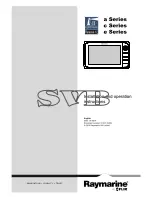
MENU MAPS
_________________________________________________________________________________________________________
10-34
SIG-00-22-02 JUNE 2022 (Revised September 2022)
Version: B.1
10.1.5 SSCC Programming
10.1.5.1 SSCC Configuration
Figure 10-29 shows the parameters that are common to both SSCC modules.
•
Gate Used
: range: Yes, No, default Yes. This can be set to No if no gates are used at
the crossing.
•
SSCC1 + 2 GPs Coupled
: range Yes, No, default Yes. When this is set to
Yes
, the
SSCC module are coupled such that if the GP of one module drops, it will cause the
lamps on both SSCCs’ to flash. Similarly, if there is a health error on 1 module, the
lamps on both modules will flash, and both gates drop. If this is set to No, the SSCC
modules will act independently, and different AND’s can be used to activate them at
different times.
•
Min Activation
: range 0-100 sec, default 0 sec. This is used to control the minimum
activation time for the crossing.
•
Rmt Activation Cancel:
range 1-5 min, default 2 min. This is used to control how long
the crossing will remain active if it was commanded to be activated by the SEAR IIi. This
is used to protect against a loss of communication to non-vital equipment keeping the
crossing active.
•
Bell On Gate Rising:
range Yes, No, default No. If set to
No
, the bell will be turned off
after activation while the gate is still rising. If set to
Yes
, the bell will remain on after
activation while the gate is still rising.
•
Mute Bell on Gate Down:
range, Yes, No, default No. If set to Yes, then the bell will be
turned off when all the gates are proved to be down, i.e., all GDs assigned to inputs are
energized.
Figure 10-29 SSCC Configuration
















































